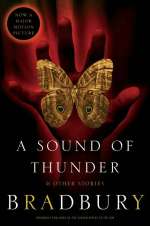As a science fiction writer, I’m in the business of making predictions about the far future.
This can be a very tricky enterprise. If you’re wrong, you’ll inevitably look foolish and backwards and stuffed full with 21st century prejudices. If you’re right, you’ll be long dead anyway, and you’ll probably still look foolish to your contemporaries.
I think part of the lack of respect that the science fiction genre receives from the mainstream has to do with this: a lot of people don’t understand how science fiction looks to the future. Or perhaps more importantly, they don’t understand how science fiction doesn’t try to predict the future. (And of course, please keep in mind that I’m generalizing here.)
To appreciate the distinction, you need to know a little about chaos theory. (Mind you, a little is really all I know about it.) In particular, the subset of chaos theory known as the Butterfly Effect.
 Most people have heard of the Butterfly Effect, which says that a single butterfly flapping its wings could eventually, through a long series of causes and effects, cause a tornado to form. Or not form. Or alter course. If you could go back in time and nudge the butterfly two centimeters to the left, you might drastically change the course of that tornado. It seems like something so inconsequential as the airspeed velocity of an insect shouldn’t be able to have such a powerful effect. And yet chaos theory has been rigorously tested and validated by scientists. The Butterfly Effect is real.
Most people have heard of the Butterfly Effect, which says that a single butterfly flapping its wings could eventually, through a long series of causes and effects, cause a tornado to form. Or not form. Or alter course. If you could go back in time and nudge the butterfly two centimeters to the left, you might drastically change the course of that tornado. It seems like something so inconsequential as the airspeed velocity of an insect shouldn’t be able to have such a powerful effect. And yet chaos theory has been rigorously tested and validated by scientists. The Butterfly Effect is real.
You can also apply this to the events of history. Ray Bradbury famously demonstrated this in his story “A Sound of Thunder.” Someone sneezes in a Florida church in October of 2000; a couple dozen people catch cold and spread it to their neighbors in a black working-class community; a couple hundred Democrats stay home from the polls on Election Day; George W. Bush wins the election instead of Al Gore. The world is a drastically different place.
In other words: Whether John McCain wears a blue or a red tie tomorrow could make the difference between the human race living in a virtual paradise or the human race perishing in a post-apocalyptic hellhole three thousand years from now. (Please choose wisely, Senator.)
So when you’re trying to make predictions about life a thousand years from now, you’re going to make mistakes. Sometimes these mistakes are based on flimsy evidence and/or shoddy reasoning, but sometimes they’re just the result of the Butterfly Effect. Unpredictable.
 Case in point: the Arthur C. Clarke/Stanley Kubrick film 2001: A Space Odyssey, which predicted that we’d be walking by Hilton hotels and Howard Johnson’s restaurants on orbital spaceports by now. Carefully researched, carefully thought-out, and completely wrong. You can’t fault Mr. Clarke or Mr. Kubrick for not predicting the economic factors that caused America to indefinitely postpone space colonization. You can’t fault them for not predicting the demolition of the Soviet Union. Their vision was sound, and I’m willing to bet it will be reality someday. It’s just that Franklin D. Roosevelt happened to be wearing a red tie on one particular day in 1927 instead of a blue one.
Case in point: the Arthur C. Clarke/Stanley Kubrick film 2001: A Space Odyssey, which predicted that we’d be walking by Hilton hotels and Howard Johnson’s restaurants on orbital spaceports by now. Carefully researched, carefully thought-out, and completely wrong. You can’t fault Mr. Clarke or Mr. Kubrick for not predicting the economic factors that caused America to indefinitely postpone space colonization. You can’t fault them for not predicting the demolition of the Soviet Union. Their vision was sound, and I’m willing to bet it will be reality someday. It’s just that Franklin D. Roosevelt happened to be wearing a red tie on one particular day in 1927 instead of a blue one.
Since we can never factor in the trajectory of every butterfly on the face of the Earth, science fiction can never truly predict the future with any kind of scientific precision. We can’t populate our novels with the kind of historically accurate details that, say, E. L. Doctorow can put in his.
And because of that, futuristic science fiction becomes a sort of intellectual puzzle. A thought experiment. Writers have to make lots of assumptions that they don’t necessarily believe in, just to get at the core subject they’re trying to explore. And as a result, critics of the genre say that science fiction is an unrealistic or a childish endeavor.
Which it isn’t. Whew.